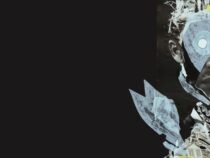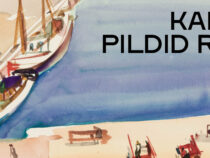-
Viktoria Berezina. A Face Assembled from Noise
21.06–28.09 -
Local Beauty. The Tallinn Jewellery Factory
08.03–28.09 -
Terje Ojaver. Serpent
08.03–28.09 -
Karin Luts. Travel Images
08.03–28.09
History
The members of the “Pallas” art society dreamed throughout its existence of founding an art museum in Tartu. In 1938, a campaign was finally mounted to collect works for the museum; these works comprised the initial collection (133 works). An exhibition was organized of the works in the rooms of the “Pallas” art school on 26.02.–10.03.1940. A day after the closing of the exhibition, a meeting was held in which the members of the school and the art society, along with officials from the town government and Ministry of Education, decided to create a museum for newer Estonian art. At the meeting of the board of the museum’s organizing committee on 10 April, suitable rooms were discussed: the upper floors of the water tower under construction, the first floor of Suurturg 3 (Raekoja plats or Town Hall Square) and the second floor of the Town Bank, situated at Suurturg 6. In the latter, remodelling was started in order to open the museum in the autumn. However, on 21 June the Soviet Union seized power in Estonia and the situation became very confusing.
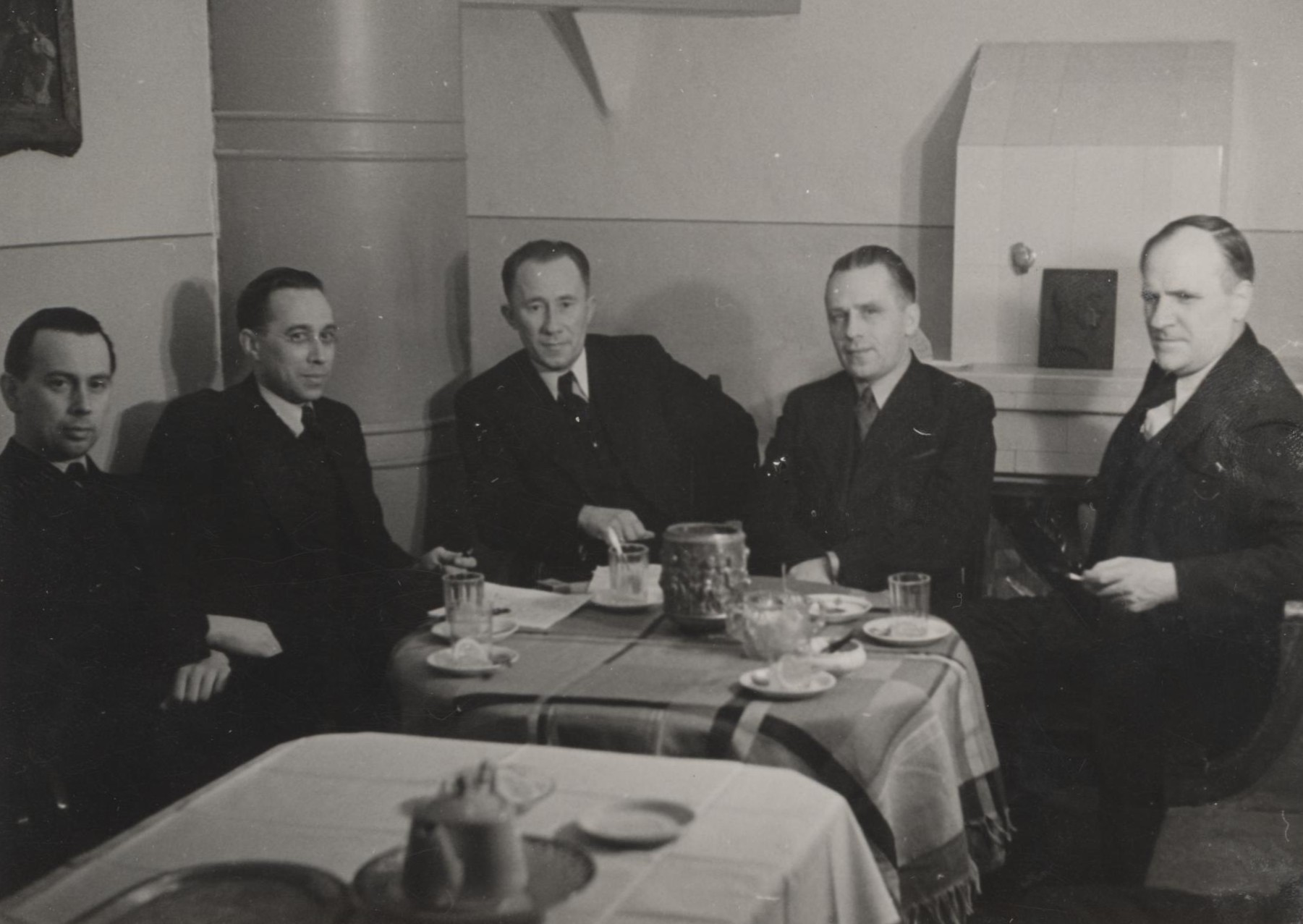
The following development of the museum was very much dependent on the fact that Helene Mugasto-Johani was appointed the head of the Tartu school board, since it was through her that the discussions with the ruling powers were held. The “Pallas” art society was already being liquidated and was finally closed down two days before the museum was opened on 17 November 1940. The first scaled down exhibition was held in the rooms of the school board at Suurturg 6 (with the entrance through a back gate on Rüütli Street and up service stairs). On the same day Mugasto-Johani proposed the founding of the museum to the town government. The temporary organizing committee had Mugasto-Johani as its head and consisted of Kaarel Liimand from the Communist Party, Armin Tuulse from the People’s Commissary of Education, Andrus Johani from the Tartu Central Trade Union, and Juhan Püttsepp from the “Pallas” society. The secretary of the society, Aarne Miikmaa, was appointed the manager of the museum and it was open on Wednesdays, Saturdays and Sundays. At the end of the year, Nikolai Kummits’ “In the Farmhouse” was acquired as the first purchase for the collection.
The Tartu Art Museum (TAM) was supervised by the school board until 1 April 1941, although it had been placed under the jurisdiction of the State Arts Administration on 1 January. The art historian Juhan Andre was appointed the manager in April and the staff consisted of Miikmaa, Voldemar Erm (both as technical employees), the financial manager Helmi Põld and the museum steward Amalie Loeve. New rooms were given to the museum on the first floor of Suurturg 3, which were completely remodelled in a month. At the same time, the art collection of the Estonian National Museum was thoroughly examined, which resulted in 274 works being handed over to TAM and another 171 being deposited (other individuals and institutions also deposited works for temporary preservation). The first research subjects of the museum were portraiture in Estonian paintings, older Estonian caricatures and the “Pallas” artists in Estonian art.

On 22 June a new exhibition was opened that had only been completed on the morning of the same day. However, the exhibition was taken down on 1 July due to the approaching war and sheltered some of the works in the morgue of the surgical hospital on Toomemägi Hill. remain to guard the collections and, with the help of Eduard Sitska and Gustav Raud, he the works were moved to shelters (in the same building, as well as in the basement of the Credit Office near the river). Voldemar Erm was the only employee who managed to This time, both the museum and the works survived the battles with barely a scratch. On 10 July 1941, when the Soviet government collapsed, the collections contained 701 works (325 belonged to the museum and 376 had been deposited; 270 paintings, 380 graphic prints and drawings, and 51 sculptures).
Erm became the temporary organizer (later he was appointed acting manager) and Tuui Koort replaced Helmi Põld. Miikmaa was kept on the list of employees although he was in hospital with tuberculosis, and died on 2 January 1942. The exhibition was re-opened on 12 October (with additional rooms opening on 9 November) with no censorship from the Nazi government, although a watercolour by Ado Vabbe and an oil painting by Kuno Veeber were sent to Germany as examples of degenerate art. The museum was open six days a week, from eleven am to three pm, but the number of visitors was modest.
On 18 January 1943, the German army headquarters ordered TAM to leave its premises. With the support of the town government, new rooms were quickly found on the cramped first floor of the stone building at Lai 17. On the next day, when, by coincidence, the last students of the “Pallas” art school graduated, the exhibition was taken down and was transported in the course of a week to a new location. Unfortunately, a bomb dropped by a Red Army plane fell in the yard of the new premises during the night of 27 January and the building collapsed. The works that were excavated from the ruins were temporarily housed in the main building of the University of Tartu, where they were cleaned and repaired. Miraculously only 17 works were destroyed and 238 were damaged to various extents (the museum held 1713 works and 45 of them were removed from the museum collection). Over the next year the main work of the museum consisted of restoring and packing the collections.
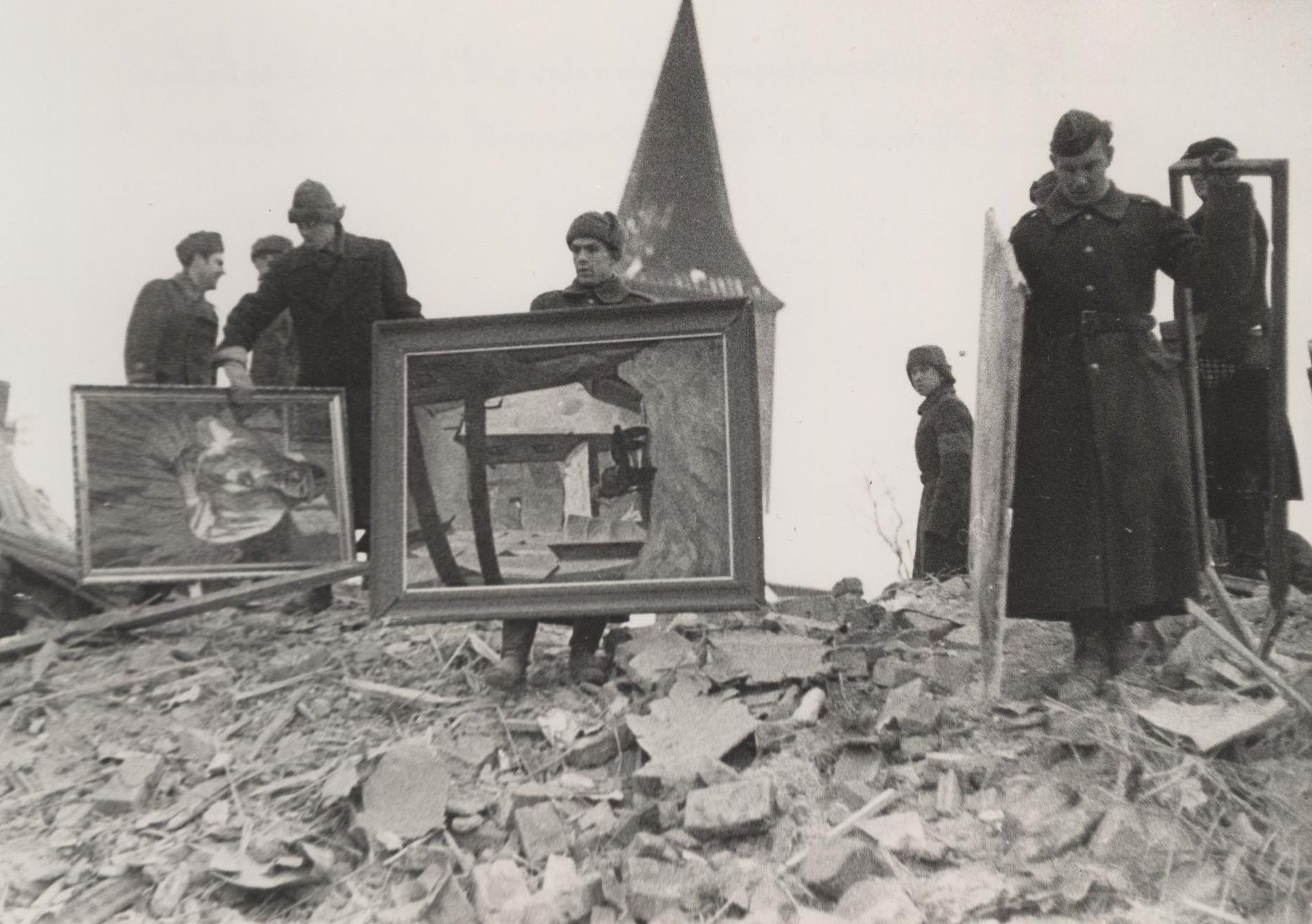
As the front moved nearer to Tartu in January 1944, the collections were moved to the Väätsa elementary school in Järvamaa and the Lahmuse elementary school in Suure-Jaani. In the former, Tuui Koort and Virve Hinnov alternated as guards, but during the battles fought in Estonia everybody from the museum was present. The collections of many individuals were also evacuated to Väätsa. The museum’s former rooms at Suurturg 3 were destroyed in August 1944. In the same month, Erm was appointed the acting manager of the newly named Tartu State Art Museum (in 1946 he was appointed the director).
On 12 December 1944, rooms on the third and fourth floors of Ülikooli 24 were given to the museum. Although the aim was to expand into the whole building, it was soon necessary to start searching for new premises because the army had moved in. There was discussion about getting the buildings at Tähe 14b or Tähe 29, but on 25 April 1945 the museum had to move to the first floor of the Artists’ Union building at Suurturg 8. The hope of moving to Tähe 14b continued throughout the summer and despite all the hardships the museum managed to mount an exhibition about wartime art (at the request of the Artists’ Union). The collections were then held in four different locations: Suurturg 8, Gildi 8, in Väätsa and in Lahmuse. Despite the lack of necessary materials, Caroline Walther tried to restore damaged works during the summer, but on 15 August she was deported due to her Baltic German roots (her personal archive and a large number of her art works are stored at the museum).
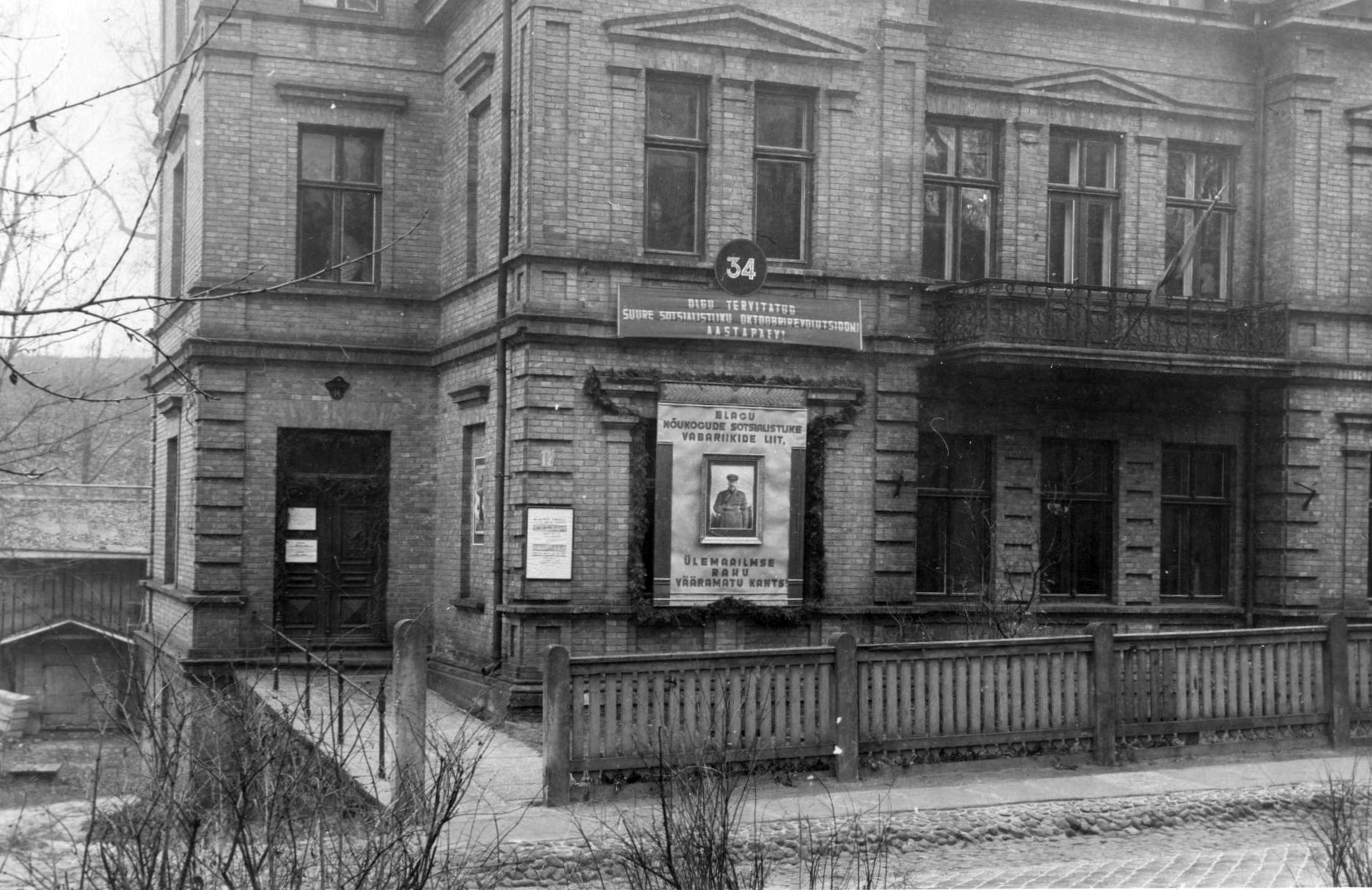
At the end of 1945, much of the residential building at Vallikraavi 14 was given to the museum. The building needed thorough remodelling and there were still some occupied apartments. The moving of the art works from the countryside continued until October 1946, but on 2 May an exhibition of new additions to the collections was opened. Over the following years, the difficult circumstances led to many memorial exhibitions (for Andrus Johani, Kaarel Liimand, Arkadio Laigo, Nikolai Kummits and Villem Ormisson). At the end of 1949, the unclaimed art works deposited during the war were added to the permanent collection and the total number of art works rose to 3097. Every year two or three exhibitions were held with over 3000 people visiting. The museum no longer collected only newer Estonian art, being required to cover the history of Estonian art from its beginning and also research, collect and exhibit Russian and Western European art.
In 1951, Voldemar Erm and the chief treasurer Tuui Koort were forced to leave for political reasons (until 1954 Linda Alekõrs-Salum was the chief treasurer, then Koort returned and held the position until 1970). The acting director became Nikolai Jasnetski, as he was considered “the only Soviet-minded person in the museum.” At the end of 1952, Vaike Tiik was appointed the new director. The museum faced harsh political criticism on many occasions during the 1950s, although usually the reason for its perceived shortcomings was the lack of resources or employees wanting to concentrate on important aspects of Estonian art. For many years both the library and art collection contained special funds with limited access. Over time, the museum was given more and more rooms of the building (on the second floor and in the basement), which led to the enlargement of the exhibition area and a rise in the number of visitors (in 1955 21 173). Beginning in 1954 the museum regularly held research conferences and, after the publication of the first catalogue in 1955, the number of publications started steadily rising. All this happened with only three researchers.
1952 also marked the first applied arts exhibition at the museum and a year earlier the collection of applied arts had been established. In 1956, Elmar Kits was the first living Estonian artist to receive a solo exhibition. During the 1950s the exhibitions of the students of the Estonian State Art Institute (the first in 1951) and annual Tartu artists’ overviews began (the first amateur artists’ exhibition was in 1952, and the first in association with the Tartu branch of the Artists’ Union was in 1955). The latter continued until the 1990s and had an overall positive effect on the town’s art life. Much of the programme consisted of visiting exhibitions from abroad. The museum also organized many travelling exhibitions in schools and other institutions. The ones that took place outside of Tartu mainly contained original graphic prints (the only medium that was suitable for travelling in its original format) and in town they were usually made up of reproductions of foreign art. In 1967, the art propaganda sector was opened and headed by Virve Hinnov, with the aim of improving the educational work done in schools, as well as among adult audiences. The art department of the folk high school was also founded, with its former graduates establishing an art club that has continued until the present day.
In 1959, the students of the Estonian State Art Institute created preliminary projects for the proposed annex of the museum, which would have been located in an empty lot to one side. The employees eagerly awaited the new rooms.

In the 1960s the State Distance Learning Courses for Art were founded at the museum. During these years the museum also helped to create an exhibition about Ants Laikmaa’s life at his former home in Taebla (curated by Vaike Tiik) and about Amandus Adamson at his home in Paldiski (curated by Tiina Nurk). Exhibitions of original works were systematically held for the Fr. R. Kreutzwald Memorial Museum in Võru and Elva District Local History Museum. At the beginning of the decade the last inhabitants in the flats of the museum building moved out and the rooms could be rebuilt. A new stairwell with a wardrobe room and lecture hall was completed in 1966. The number of visitors remained the same as a decade earlier (21 187 people in 1965) but creative usage of statistics helped to show it as many times higher, e.g. in 1961 it was reported that 93 977 visited an exhibition in the foyer of the Saluut cinema. During the 1960s, younger artists were given group shows (Efraim Allsalu, Ilmar Malin and Kaljo Polli in 1964; Nikolai Kormashov and Leili Muuga in 1965; Olav Maran, Enn Põldroos and Olev Subbi in 1967). In 1969, an exhibition of works by Endel Kõks, who had emigrated to the West during the war, marked the opening up of information about exile Estonians. In 1964, the first almanac containing articles by researchers from the museum was published and during the decade 40 catalogues were compiled. On 24 January 1968, the museum’s research secretary, Tiina Nurk, was the first employee to defend her dissertation, on the “Pallas” art school.
In 1965, the art collections contained 7169 works and the auxiliary collections 27 590 items (books, photos, works with lesser artistic value etc.). During the decade, the Ministry of Culture bought works for the collections from all of the museum’s exhibitions. At the end of the decade, Anton Starkopf’s House Museum was founded (first managed by Lea Mehiline, and later Ahti Seppet), but due to a lengthy court case the first exhibition was held only in 1972. Starkopf’s bequeathed works are stored in a separate collection. Besides the main display, the House Museum also held smaller visiting exhibitions, but it only had a couple of thousand visitors each year.
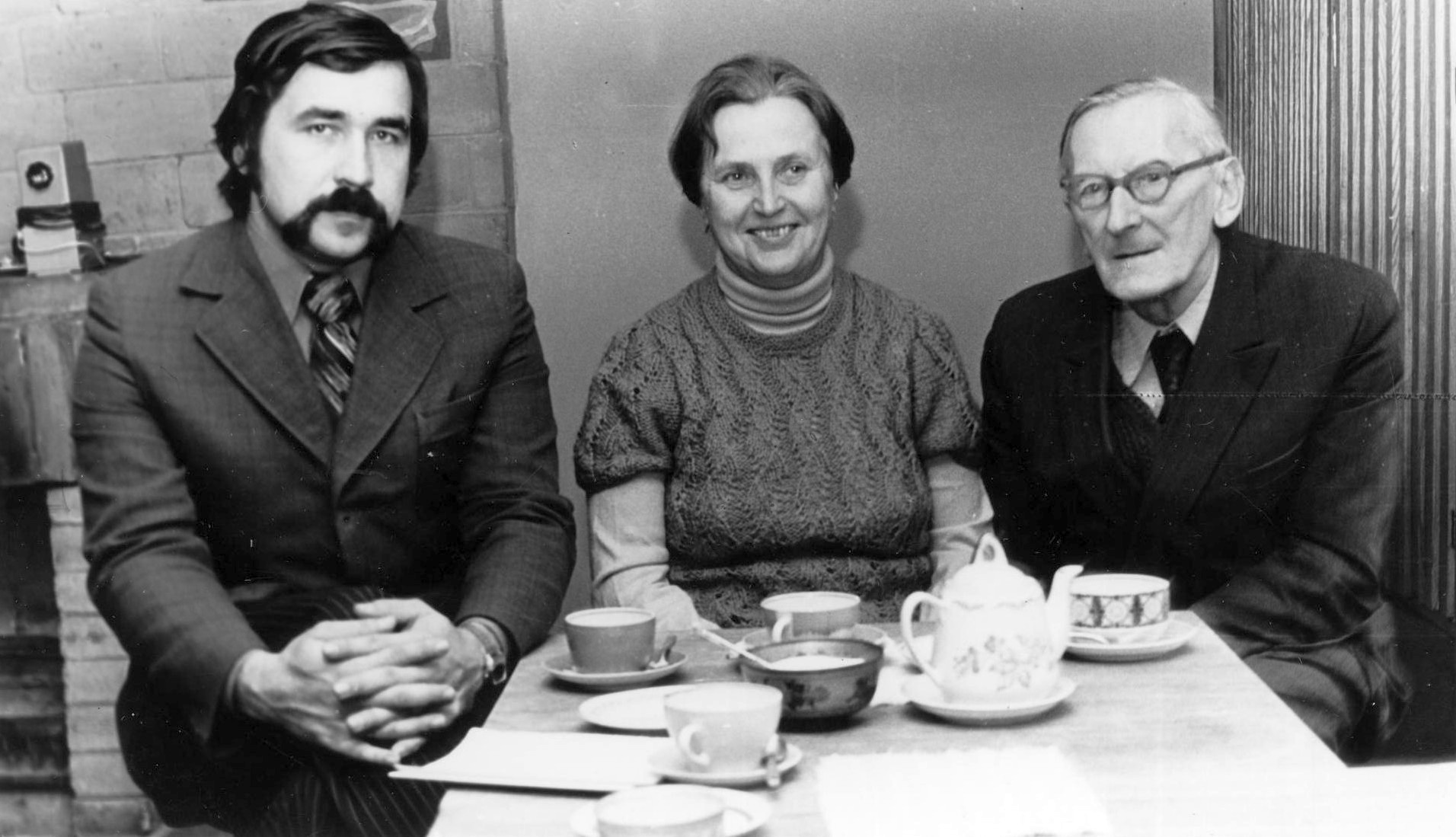
In 1970, the museum’s research archive was established and materials on the history of the museum and artists were collected. That year Taimo Kuusik became the chief treasurer. In the next year Eduard Kutsar’s House Museum in Elva was opened (it was later handed over to the Tartu County Museum and is now closed). In 1972, the museum’s tower-like addition was opened, and it now mostly houses collections. Quite soon after its completion, it became clear that its planning had been faulty and using the new elevator would be impossible. At the same time, the design for a new annex behind the main building was started but due to lack of funds it was not built (the architect was Raul Kivi). In 1976, the museum had 35 employees, the art collection had 10 993 works and the auxiliary collection held 49 078 items. In the next year, Toivo Toomemets was appointed the director and exhibition areas were reduced due to a lack of space for collections.
With regards to publications, the main bottleneck during these years was the printing house, where at any one time as many as a dozen items waited to be printed. At the beginning of the decade, new artists received group exhibitions (the sculptors Riho Kuld, Matti Varik, Edgar Viies and Ülo Õun in 1972; the painters Peeter Mudist, Tiit Pääsuke and Ludmilla Siim in 1976), and the tendency to exhibit the works of younger artists continued. Exhibitions at the museum were visited by 33 076 people.
The previous research director, Eha Ratnik, became the acting head in 1980 and three years later Mari Nõmmela was chosen as the new director. In the 1980s more and more young artists received personal exhibitions (Ervin Õunapuu, Andrus Kasemaa, Raivo Kelomees, Miljard Kilk, Ahti Seppet et al.) and a new facet of the exhibition programme was the inclusion of architectural themes. At the same time, much effort still went into creating travelling exhibitions. In 1988, the “leaning building” (Raekoja plats 18), which had just been renovated, was given to the museum, and Stone Bridge Picture Gallery was opened with the intent of mainly exhibiting an overview of Estonian art. During the same years a sculpture garden was planned in an area near the museum, on Vallikraavi Street, but since the lot was given back to its legal heirs, the sculpture garden was never built. A new project for an annex by Merike Raid also never got off the ground. In 1990, when Taimo Kuusik retired, Tiiu Talvistu became the chief treasurer. A year later the Tartu State Art Museum once again became the Tartu Art Museum.
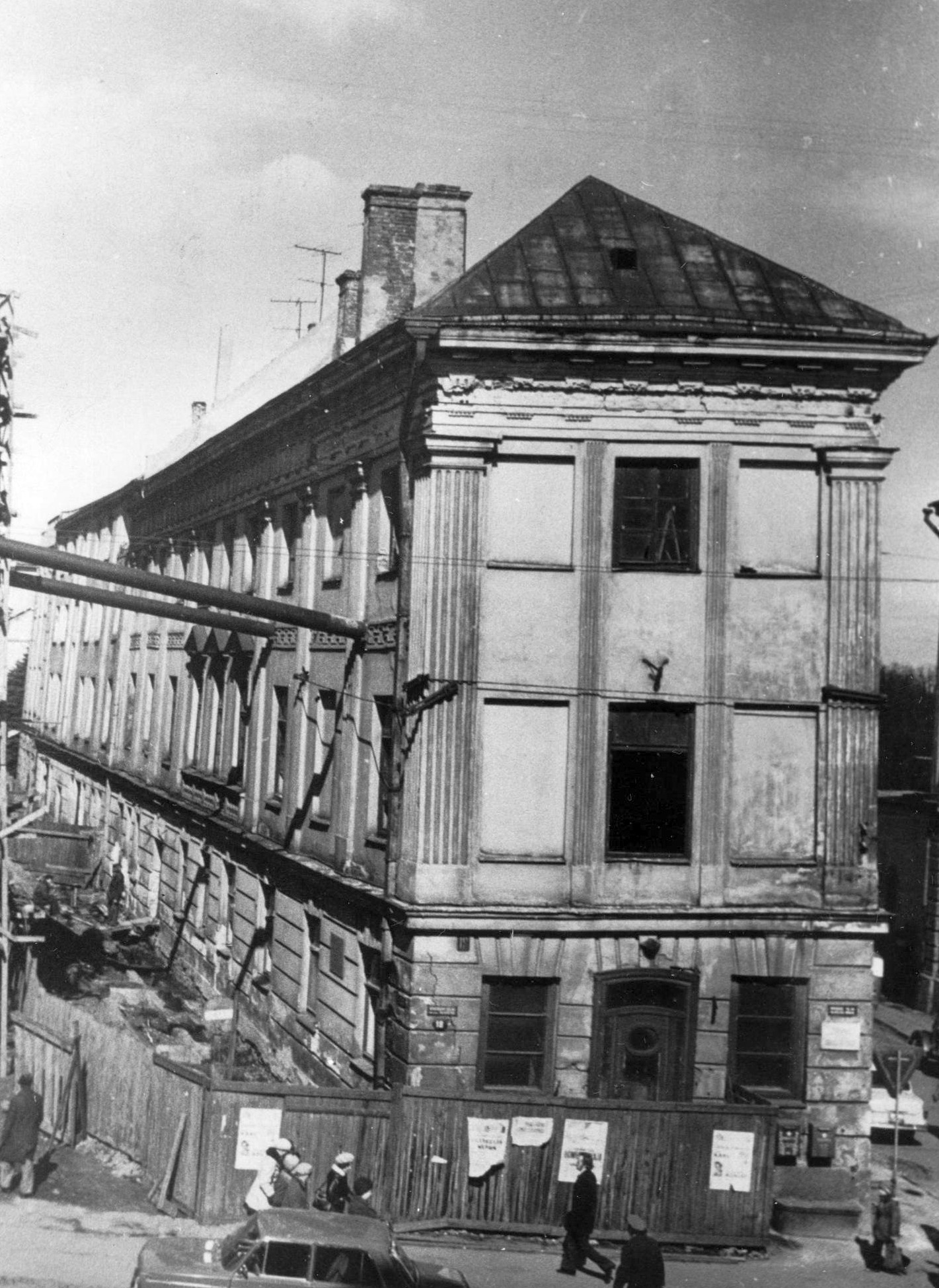
In 1990, the Ministry of Culture gave the museum control of funds for purchases, so it could then decide what to acquire. During the decade, much attention was paid to filling the gaps that had been left by the policies and restrictions of the Soviet powers, and the tradition of acquiring graduates of the Painting Department of University of Tartu was also established. A vast improvement to the museum’s funds came with the re-establishment of the Cultural Endowment of Estonia, which is now the main source of funding for acquisitions. In 1997, the photo and video collection was established and, due to other materials being introduced, it is now known as the “contemporary art collection”. The main donations of the decade were the works by Johannes Saal and the collection of Aleksander and Vanda Tassa. In 1993, Elmar Kits received the honour of being the first artist to have an expansive catalogue published on his works since the regaining of independence and his memorial exhibition encompassed both of the buildings. Due to the rapidly changing times, the museum had only 7674 visitors in 1997.
In 1996, Enriko Talvistu became the director. Since the conditions in the museum’s basements, which housed most of the collections, were getting worse, Talvistu had to make the widely unpopular but necessary decision to close all the exhibition areas on Vallikraavi Street in 1999. From then on exhibitions were only held at Raekoja plats. The Anton Starkopf House Museum, due to its low attendance, was closed in 1993 and was dissolved in 1996. In 1998, the position of museum educator was established: while earlier the aim was to take art to students, the new situation led to the opposite solution. By the end of 2000 the museum’s collections contained 21 636 art works.
In 1999, Epp Preem became the acting head and a year later Heiki Pärdi was named the director. In 2001, the ground floor of the “leaning building”, which had housed a pharmacy and had been handed over to the museum a year earlier, was opened. The new space allowed the museum to put on more short-term exhibitions. In 2005, Reet Mark became the director and Mare Joonsalu was appointed the chief treasurer. Due to the lack of storage space, the textile and leather objects of the applied arts collection were handed over to the Estonian Museum of Applied Art and Design.
Large retrospective personal exhibitions accompanied by expansive catalogues became more systematic (e.g. Karin Luts 2004, Johannes Saal 2006, Eerik Haamer 2008, Endel Kõks 2012 and Malle Leis 2014). This has also meant that exile art (the exhibition “Estonian Art in Exile” in co-operation with the Art Museum of Estonia in 2010–2011) and archives/bequeathed works of exile artists (Karin Luts, Endel Kõks and Ville Tops) have become more important. A significant undertaking was the exhibition and monograph on the “Pallas” art school in 2009. The opening of the ground floor of the museum also brought about the tradition of graduate exhibitions of the Painting Department of the University of Tartu, which are still being held. The importance of younger artists in the museum’s programme has also risen. In 2004, the number of visitors had climbed to 15 642.
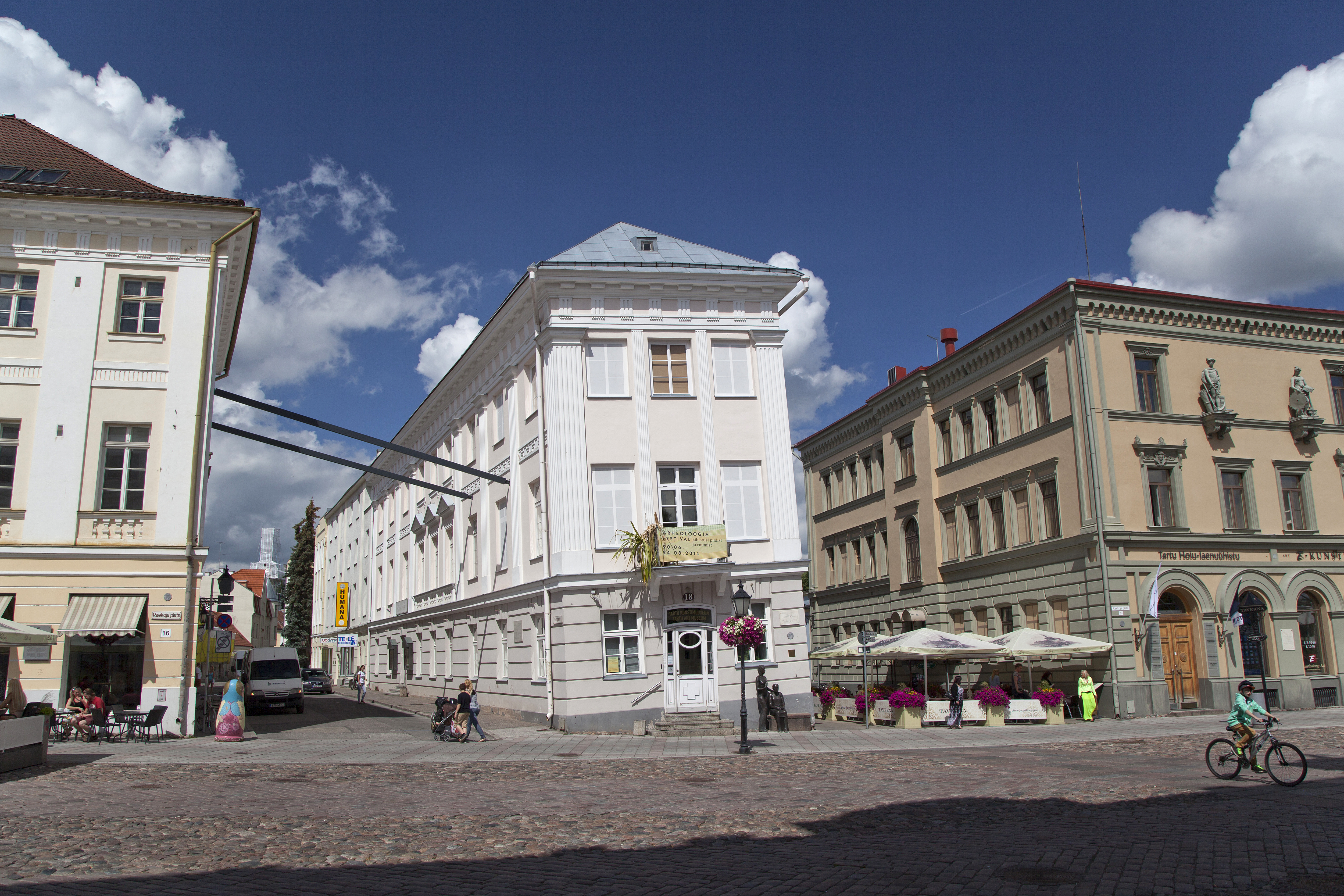
In 2010–2013, the museum had a partnership with the contemporary art festival ART IST KUKU NU UT, which resulted in popular exhibitions. In 2011, the competition for the joint building of the museum and Tartu Town Library was successfully completed, with QP Arhitektid OÜ winning, but in all probability the structure will never be built. In 2013, Rael Artel was appointed the director. Her time in office has been characterized by great changes in the internal structure of the museum and in its exhibition programme, but has also witnessed many public scandals. By the end of 2013 the number of visitors had risen to 24 878. At the end of 2014, the art collection contained 22 561 works. In 2017, the former Minister of Culture and rector of the Estonian Academy of Arts Signe Kivi became the director of the museum. In 2019, Kivi left the position to serve in the Estonian parliament Riigikogu. In her place, the head of the exhibitions department Joanna Hoffmann was selected as the acting director and in autumn 2020 Hoffmann was appointed the director of the Tartu Art Museum.
Since March 2015 the Tartu Art Museum has used the name Tartmus.
During three quarters of a century, the museum has managed to be a meticulous, active and equal partner with artists, other institutions and its audience, despite serious economic and spatial shortcomings. The museum has remained true to its founding principle of collecting and presenting new Estonian art, but has also never forgotten its roots in the “Pallas” art school. Despite the fact that from the beginning employees dreamt of a purpose-built museum building, this idea has always been bogged down by bureaucracy. The dream itself, however, remains and, while we wait for it to come to fruition, we will keep on doing what we have done over the course of the last 75 years: collecting and exhibiting good art.
Author of the text: Peeter Talvistu. Published in the museum’s 75th jubilee book.
